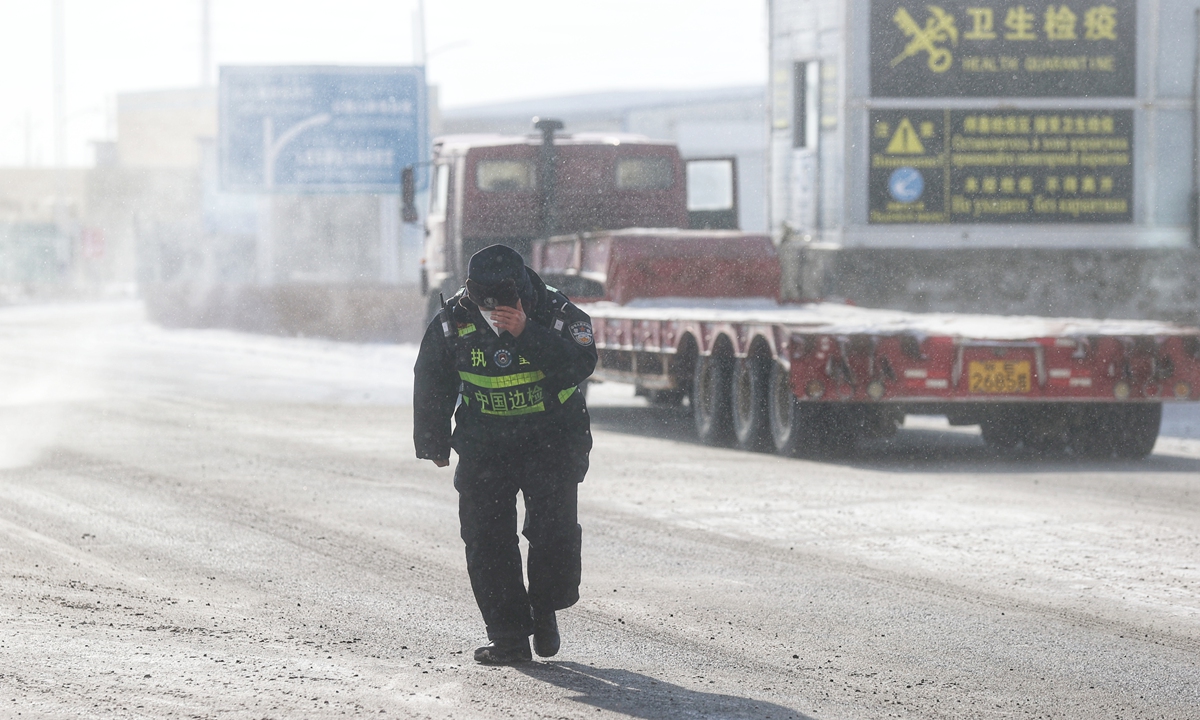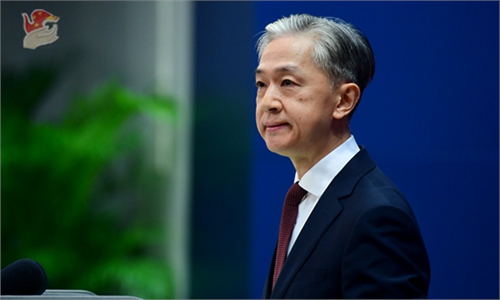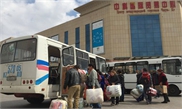
Huang Jiajun bending his body to keep balance with a gale blowing dead against him and snow grains rising along the wind flapped on his face as he was walking close to a truck that was entering a border checkpoin in Alashankou Port,Northwest China's Xinjiang Uygur Autonomous Region. Photo: Cui Meng/GT
Northwest China's Xinjiang Uygur Autonomous Region resumed passenger traffic at three of its land ports with Central Asian countries on Monday to meet the needs of people-to-people exchanges, the Xinjiang Daily reported.
Passenger traffic via road resumed at the Alashankou and Baketu inland ports bordering Kazakhstan, and Torugart Port, which borders Kyrgyzstan, in addition to cargo traffic that had resumed earlier, according to the report, citing local port authorities.
These three ports are the second group in Xinjiang to resume road passenger traffic. On January 8, the northwest Chinese region resumed passenger traffic at four land border ports including Horgos Port.
These moves marked the full-scale resumption of road ports at Alashankou with Kazakhstan, according to a statement sent to the Global Times by the port.
Wang Jiang, an expert at the Institute of China's Borderland Studies at Zhejiang Normal University, told the Global Times that the resumption indicates further measures will be taken to boost the recovery of border trade.
China announced last week that it had achieved a major and decisive victory in its COVID-19 prevention and control since November 2022.
As the forefront of China's opening-up drive as well as a hub for westward opening-up, Xinjiang's opening of border ports suits the circumstances, Wang said.
From January 1 to Saturday, passenger traffic volume reached 14,000 from no personnel exchange in 2022, an official in the administrative office of Horgos port told the Global Times on Monday.
Local authorities said the decision was made based on appraisal of the implementation of the first four ports, with an improved contingency plan and overall servicing capacity across multiple ports.
On Friday, the city of Alashankou resumed railway service with the provincial capital Urumqi and saw a train off, after a suspension of nearly two and a half years, according to a statement sent to the Global Times by the port.
Xinjiang's trade with neighboring Central Asian countries has recovered rapidly following China's optimization of epidemic control measures and the downgrade of the management of COVID-19.
For instance, at the Baketu port, the number of vehicles passing through increased 156 percent year-on-year in January. Cargo throughput reached 34,100 tons with an annual growth of 125 percent while cargo value surged 75 percent to 1.26 billion yuan ($183 million).
The performance was achieved despite an impressive growth in 2022, which saw cargo value rise 25 percent from 2021 to its best level since the port's establishment in 1990.
On January 30, five cargo TIR trucks left Xinjiang's Irkeshtam land port, carrying Made-in-China goods to Kyrgyzstan, fueling the momentum of cross-border trade, according to a statement sent to the Global Times by the International Road Transport Union.
The Xinjiang region, which borders eight countries, saw its foreign trade expand rapidly in 2022. The region's trade in goods reached 246.36 billion yuan, up 57 percent from 2021 and the growth rate ranked No.1 among all 31 localities on the Chinese mainland.




